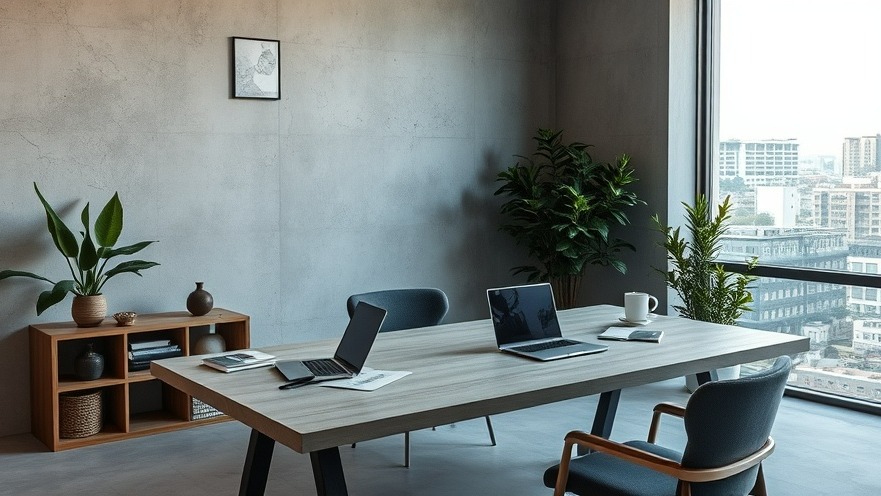
Creating Comfort in Remote Workspaces
In today's fast-paced digital world, many individuals are seeking ways to create functional yet calming remote workspaces. One inspiring example comes from the recent design by Rubén Valdez Practice for the Paradero Hotel in Todos Santos, Mexico. Valdez creates a concrete spiritual enclosure that not only enhances aesthetics but also serves a greater purpose in promoting wellness and focus.
The Role of Environment in Productivity
Research supports the importance of the work environment in enhancing productivity and mental well-being. Valdez’s design exemplifies this connection. By utilizing textures, natural light, and minimalistic elements, he transforms these spaces into serene settings that reduce stress. This approach is crucial for remote workers, as a blend of comfort and style can lead to improved task performance and decreases in fatigue, allowing for sustained focus on creative endeavors.
Integration of Nature and Work
One of the key insights from Valdez's design is his integration of nature into work environments. Biophilic design, which emphasizes the human-nature connection, has been shown to boost creativity and mental clarity. Elements such as green plants, natural light, and outdoor views can create a more engaging workspace. For digital nomads, incorporating these elements into home offices can provide a refreshing change and serve as an inspiration for productivity.
Practical Tips for Designing Your Workspace
When thinking about your own workspace, here are a few actionable tips
Maximize Natural Light: Position your desk near windows to take advantage of sunlight, which can enhance mood and focus.
Choose Calming Colors: Opt for color palettes that promote tranquility, such as blues and greens, to reduce stress levels.
Incorporate Personal Touches: Add elements that resonate personally, from artwork to plants, ensuring the space feels inviting.
Challenges of a Poor Workspace
On the other hand, working in dimly lit or chaotic environments can introduce several challenges. Ergonomic discomfort from improperly sized furniture leads to physical strain, which can detract from overall productivity. According to studies, nearly 60% of remote workers report back and neck pain, often stemming from prolonged periods of inadequate posture. Valdez's designs highlight the importance of thoughtful workspace layout, which improves not only aesthetics but the user experience too.
Embracing Flexibility
Finally, flexibility is essential when creating your workspace. Digital nomads typically move between varied locations, each presenting unique challenges and opportunities. Valdez's concepts emphasize modular and adaptable spaces, allowing users to alter their environment for specific tasks or moods. This flexibility could entail using portable furniture or adjustable screen heights to facilitate a better work-life balance.
Conclusion: The Path to a Productive Workspace
Ultimately, learning from innovative designs like those of Rubén Valdez can significantly influence how remote workers create functional and comfortable workspaces. By being mindful of ergonomics and the psychological aspects of workspace design, one can create a setting that not only promotes productivity but also enhances personal comfort and well-being. As you consider your own workspace, draw inspiration from these principles to foster an environment tailored for your professional success.
Are you ready to rejuvenate your remote workspace? Explore these principles and transform your working environment into a haven of productivity and creativity!
 Add Row
Add Row  Add
Add 




Write A Comment